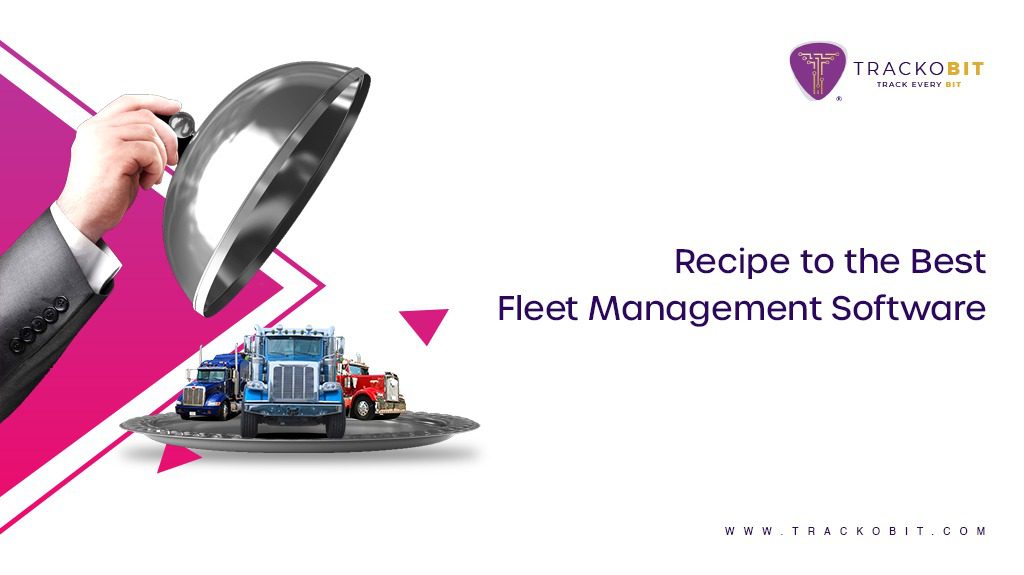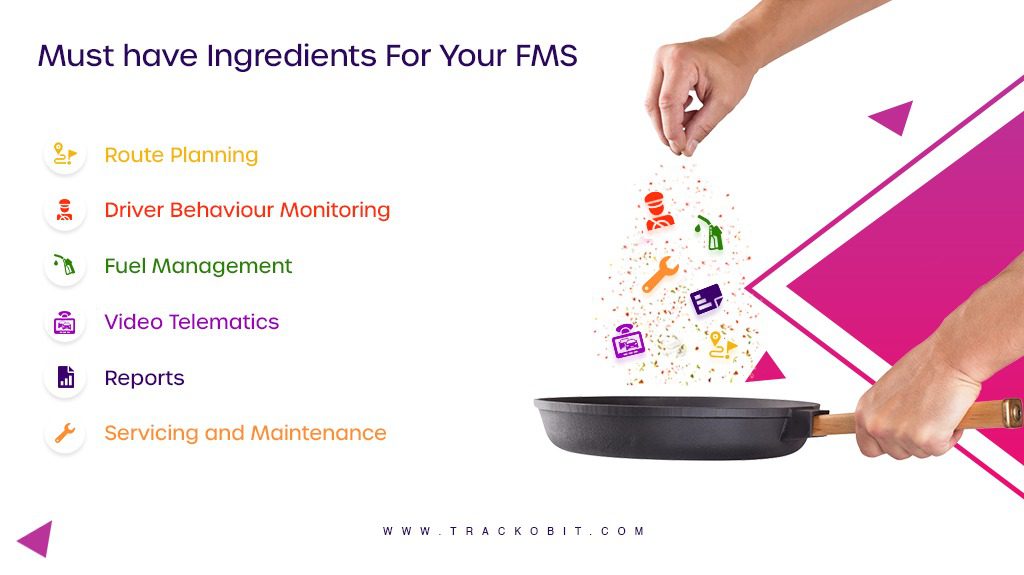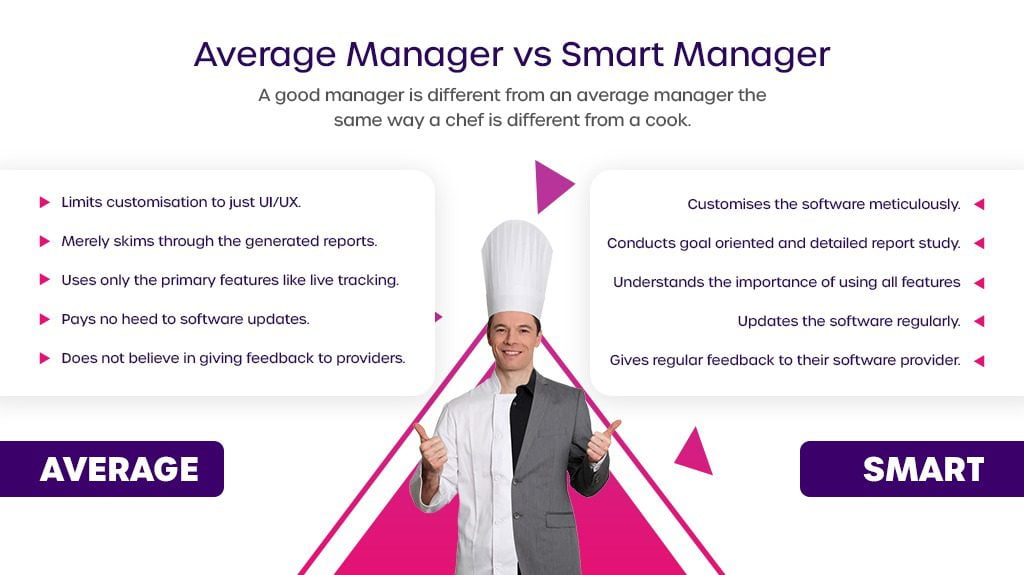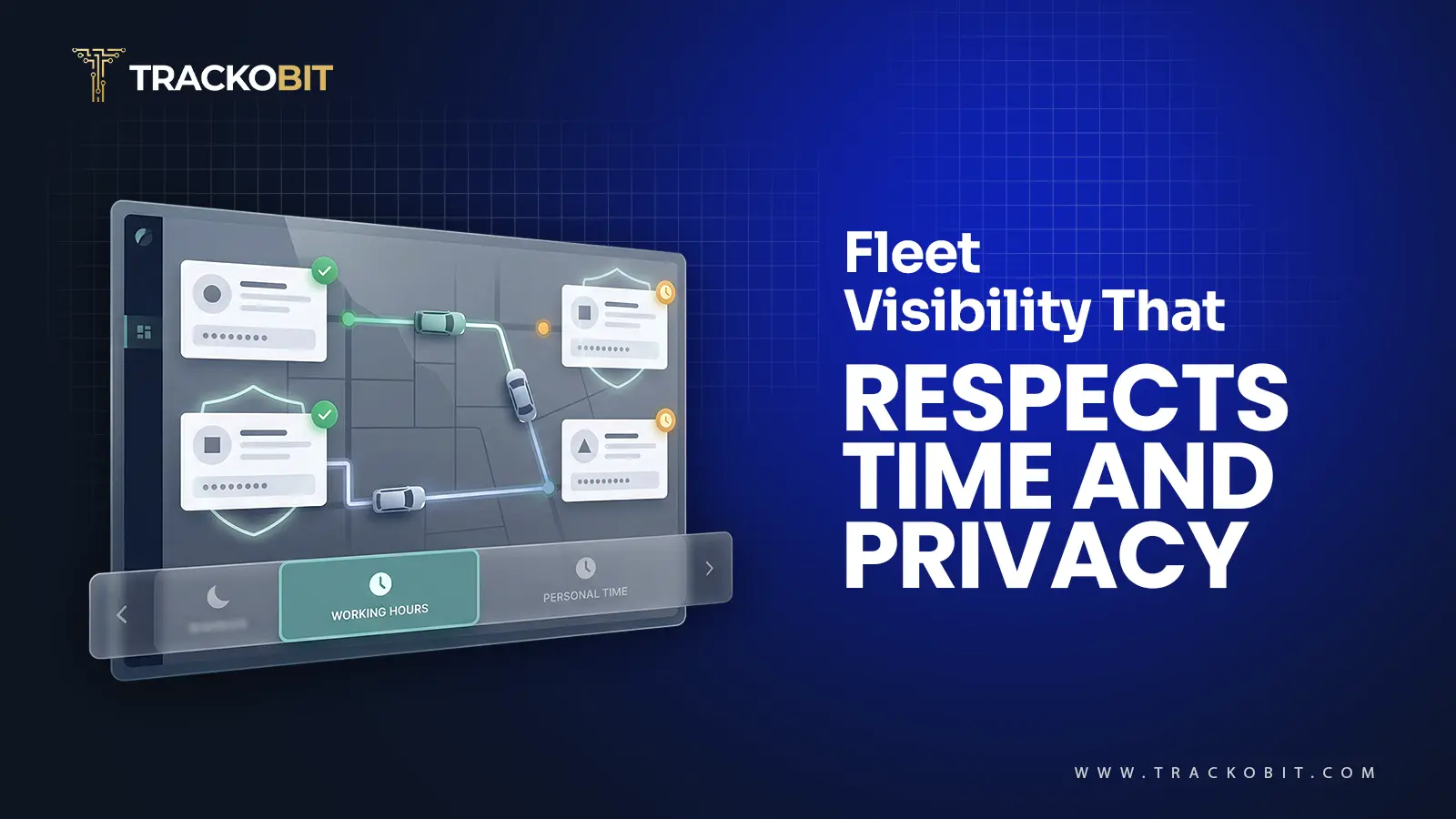-
TrackoBit
Manage commercial vehicles with the new-age Fleet Management Software
TrackoBit -
TrackoField
Streamline your scattered workforce with Field Force Management Software
TrackoField -
Features Resources
-
Blog
Carefully curated articles to update you on industrial trends. -
White Paper
Insightful papers and analysis on essential subject matters. -
Glossary
Explore an alphabetical list of relevant industry terms. -
What’s New
Get TrackoBit & TrackoField monthly updates here. -
Case Study
Explore the cases we solved with our diverse solutions. -
Comparisons
Compare platforms, features, and pricing to find your best fit.
-
About Us
Get to know TrackoBit: our team, ethos, values, and vision. -
Careers
Join the most dynamic cult of coders, creatives and changemakers. -
Tech Support
Learn about our technical support team and services in detail. -
Events
Check out the exhibitions where we left our marks and conquered. -
Contact Us
Connect with us and let us know how we can be of service.
Complete Recipe to the Best Fleet Management Software
- Author:Drishti Dua
- Read Time:9 min
- Published:
- Last Update: November 9, 2023
Table of Contents
Toggle
Disclaimer! This recipe can change the way your fleet functions, for the better.
Table of Contents
Toggle
Thinking about investing in a fleet management system? But uncertain of the results? Well here is your recipe for finding the best fleet management system. Before we get into it though, let us have a detailed view of exactly what fleet management software is.
What is a Fleet Management System?
Traditionally, the fleet management system was used only for location tracking. But now it has developed into a holistic optimisation system that allows fleet businesses to focus on organisation and data collection for their vehicles. Through telematic technology, this data is then stored in the software for managers to view and act upon.
So what exactly goes into cooking up the perfect fleet management system for your fleet? And how can managers use it to completely transform their fleet? For fleet management software to be useful for any industry, it is important to have just the right solutions. So let’s move on to the ingredient list of this recipe!
Choosing the Best Fleet Management System for Your Business
When selecting the ingredients for a fleet management system, managers need to keep in mind both their functions and also their quality. The entire process is not only long but can also be time consuming. But as they say,
“Quality is never an accident. It is always the result of intelligent effort” – John Ruskin
Primary Ingredients:
The ingredients belonging to this list are the ones that structure your system. They optimise the most essential part of a fleet and aid fleets boost their productivity. Managers need to put in major consideration selecting the best quality ingredients for their system.
- Vehicle Tracking
- Route Planning
- Fuel Management
- Driver Behaviour Monitoring
- Asset Tracking
- Video Telematics
Secondary Ingredients:
These features are not visible to managers at first glance. But they can make or break the software and thus require special attention from managers. Their right usage heavily impacts the fleet management process of a business. Here is a list of such ingredients:
- Reports and Records
- Servicing and Maintenance
- Vehicle Diagnostics
- Technician Management
- Announcements and Alerts
- POI and Geofences

Preparation:
“It’s better to prepare than repair” – John C. Maxwell
Top-quality ingredients help, but the preparation finally decides just how your dish will turn out. Simply investing in ready-made software will not help your fleet grow just how homemade food requires more effort but is also more fulfilling. Managers must research the market, existing software, and competition, and prepare themselves well before investing in the right fleet management software:
Step 1- Study the Market: Understanding the latest trends in the market should always be done before hunting for software. Learning from the experiences of other fleets is a way of eliminating problems in your own business.
Step 2- Select What Works For You: Now that you know the market, the next step should be studying your fleet’s purpose. Every fleet calls for a unique set of ingredients and managers need to figure out what they need. This will help you decide the parameters that will ultimately aid in choosing your software.
Step 3- Take a Demo: Next it is time to shortlist the software that matches your needs and request their demo version. This helps you understand the UI/UX of the software and the accuracy of the data fetched by the software. .
Step 4- Choose Solutions: Just like adding unnecessary ingredients to a dish can make it overwhelming, integrating every solution with your fleet can make software difficult to navigate. This is why this step should never be skipped.
Cooking Directions:
After you have selected your software and its solutions, it is now time to bring everything together. Special attention to detail ensures customer satisfaction and growth in clientele for the fleet business. Here are the steps managers need to follow for this amalgamating process:
Step 1- Customise the Solutions as You Want: Solutions of a good fleet management system are always customisable. Ensure you receive alerts for only the events you want. Declutter solution reports by asking for custom reports.
Step 2: Spice Things Up With Custom UI/UX: While the solutions are the ingredients, UI/UX is the spice of this recipe. Nobody likes to consume bland food, do they? For a dish to be appetising, it is essential to find the best balance between these spices. This is why managers need to invest time in customising them.
Step 3: Taste The Finished Product Before Serving It To Clients: Test out the software for yourself before forwarding it to your clients. Any error or discrepancy should be resolved before the final step. Failure to do so can hit the productivity of the fleet.
Step 4: Rollout Software: Now, your software is hot and ready to be served. Use it to the maximum of its capacity to optimise your fleet operations completely.
How Does Fleet Management System Help Your Business?
A dish well crafted with high nutritional value will be more popular than one that harms health. Similar is the case with a fleet management system. The primary objective of any software is to help a fleet business grow positively. While it is impossible to list all the benefits of a fleet management system by itself, here are some important ones:
Enhance Profitability: The final goal behind establishing any business is to gain profits. This is why a fleet management system helps fleets reduce their expenditure cost and move towards making profits. The fuel management solution helps fleets eliminate fuel wastage amidst rising fuel prices, allowing savings.
Better Safety: Safety is a major concern for all fleets, especially ones handling high-value consignments. Solutions like driver behaviour analysis and video telematics ensure ethical practices on the road. Reduction in accidents also cut down the budget of a fleet previously wasted on maintenance and repair.
Improved Clientele: Users are the best ambassadors for a business. This is why increasing customer satisfaction will help businesses improve their clientele as well. This vast clientele can vouch for the fleet’s reliability, forming a cycle of growth for the business.
Higher Security: A driver can guard vehicles while travelling, but what about parked vehicles? They are openly vulnerable to theft. Thus, the parking mode available with the fleet management system alerts managers every time a vehicle is displaced from its parked location. It also guards these vehicles against the robbery of batteries.
Eco-Driving: The system allows fleets to adopt greener practices on the roads. All the solutions offered by the system lead to less fuel consumption. Resultantly, pollution caused by burning fuel in an engine also falls.
Using Your Fleet Management System Correctly
No chef is perfect, just as no fleet manager has complete knowledge of ways to run their fleet management software efficiently. Thus, here are a few practices that should be avoided to avoid causing fleets monetary losses:
Mistake 1: Not Understanding the Potential of Customisation
Well, not everybody has a similar taste pallet. Some like their food spicy while some have a sweet tooth. Similarly, not every fleet has the same needs and shortcomings. But unlike the common misconception, customisation does not end with choosing solutions and UI/UX for your fleet.
For the smooth functioning of a fleet, owners need to find an equilibrium between automation and manual management. This is why TrackoBot, the leading fleet management system in the market, allows managers to choose which solutions to automate.
Mistake 2: Not Studying the Report
There is no scope for improvement without understanding the issues with the existing operations of a fleet business. After all, practice makes perfect, doesn’t it? Ignoring the data collected by the system can be one of the major reasons behind a fleet’s stunted growth.
Reports are responsible for highlighting all the pain points for a fleet. Staying ignorant of them can lead to issues in the future. But there are many layers to studying reports as well. A big mistake most businesses make is to superficially analyse reports for immediate actions. While an efficient method to eliminate loopholes from a fleet, it makes no long-term impact on the fleet.
Analysing reports over a period of time helps managers understand their fleet’s functional patterns. This information then helps set long term goals for a fleet. Goal oriented management is the key to success for fleet businesses.
Mistake 3: Ignoring Underlying Features
What distinguishes a professional chef from a home cook? It is the attention to detail that makes all the difference. A manager who has invested time in understanding each solution of a fleet management system is well-versed with even the uncommon features of the software.
Commonly available features only complete 40-50% of the optimisation process. For fleets to become profitable and productive, managers also need to make use of features that are situated deep in the software.
A very good example of this is the technician management/admin app that optimises the management process of GPS technicians. Without this system, managers might experience data theft or unsatisfied customers.
Mistake 4: Not Communicating With Software Provider
Does the relationship between a customer and software provider end once the system has been handed over? Most certainly not. Growth in technological advancements constantly brings in an influx of improvements and upgrades for the fleet management system.
This opens up the requirement for managers to constantly stay in touch with their providers. Not only keep up with such upgrades but also learn about things in the pipeline to plan for their implementation.
Feedback is a great way to ensure that the providers are aware of the struggles faced by their clients. It is the feedback that alerts these providers of the aspect of their software they need to improve and work on.
Smart Manager vs Average Manager
No cooking practice can succeed without the wits of a chef. A chef who finds solutions to their problems will end up with high-quality products compared to one who blindly follows the crowd.
Therefore a chef with professional training is more highly acclaimed than a mere contracted cook. Similarly, while smart managers try to use fleet management systems for specified problem-solving, the average managers simply use the system to merely track their fleets, bringing no innovation to the table. Some stark differences between a smart and an average manager are:
Customise Automation: An average manager will never try to find a balance between automated and manual fleet management methods. They will rely completely on the software to optimise their fleet. A smart manager on the other hand will test out the system and see which aspects of their fleet operate better when managed manually, finding an equilibrium.
Report Based Decision Making: An average manager will not spend time studying reports keeping long-term goals in mind. The reason behind their study would be to eliminate any immediate issues. But, a smart manager will always be farsighted, making goals for the long run using existing data.
Communication With Provider: Average managers will not participate in the technological growth process. But a smart manager knows how technology is the gate to growth in the coming time. This is why they will keep themselves updated about potential advancements in the pipeline.
Provide Feedback and Raise Enquiries: Communication with software providers does not end at merely learning about upcoming updates. Average managers will disregard the chance of providing feedback to their provider. Smart managers on the other hand will be eager to witness how their feedback changes the software. They will also raise queries with the provider for smooth operations.

To Conclude
The formula behind a fleet’s success is equal parts technology and the manager’s efforts. And with this, we have now completed this tried and tested recipe for choosing and operating a fleet management system. Managers can use it to transform their fleet’s businesses and serve it hot.
Don’t have software in mind? Check out TrackoBit, the perfect blend of all the ingredients we have mentioned in our recipe above. With its dynamic customizable features, the software makes it very easy for businesses to track and develop their fleets.
Drishti Dua, a Content Contributor at TrackoBit has a rich background in literature and professional expertise in SaaS and technology writing. She has carved her niche in the space of Geospatial techn... Read More
Related Blogs
-

When Tracking Needs a Clock: Rethinking Fleet Visibility
Tithi Agarwal December 24, 2025Read on to understand why fleet tracking works better when it follows working hours. Because visibility should support operations, not…
-

What Makes TrackoBit’s Video Telematics Software Truly Next-Gen?
Shemanti Ghosh December 17, 2025TrackoBit’s video telematics software blends smart video intelligence with full server control. The result? Superior fleet reliability and safety.
-

Plug, Pair, Perform TrackoBit Introduces BLE Sensor Integration
Tithi Agarwal November 26, 2025TrackoBit’s BLE Sensor Integration enables wireless, real-time monitoring with faster installs and accurate insights. It improves fleet efficiency, visibility, and…
-

How to Use Driver Behavior Reports as a Sales Hook to Close Big Fleets
Tithi Agarwal October 16, 2025TrackoBit’s driver behavior reports empower fleet providers to win big contracts by showcasing safety, efficiency, and measurable ROI.

Subscribe for weekly tips to optimize your fleet’s potential!
Your inbox awaits a welcome email. Stay tuned for the latest blog updates & expert insights.
"While you're here, dive into some more reads or grab quick bites from our social platforms!"Stay Updated on tech, telematics and mobility. Don't miss out on the latest in the industry.
We use cookies to enhance and personalize your browsing experience. By continuing to use our website, you agree to our Privacy Policy.

































